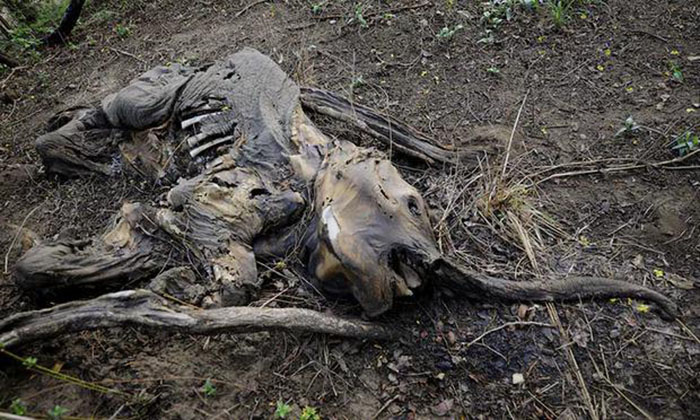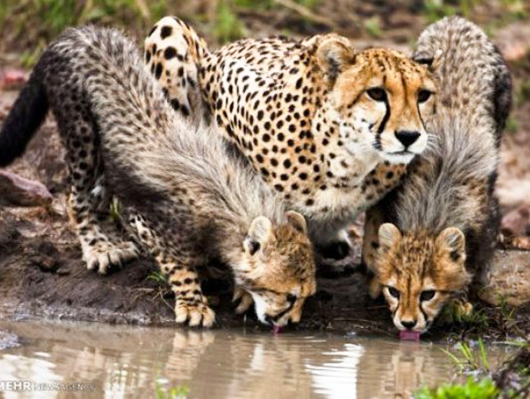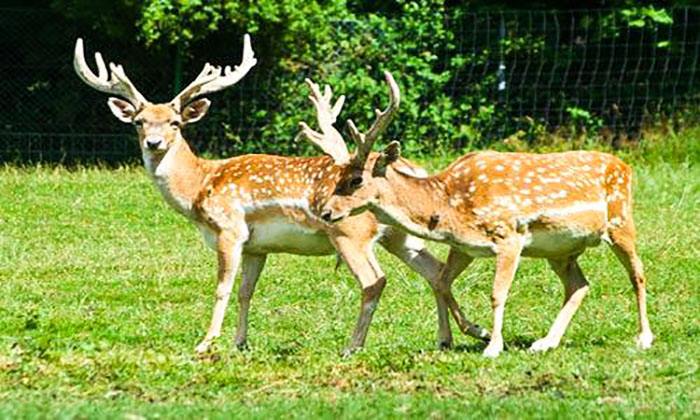Many environmental activists and campaigners worried about the extinction of Iranian cheetah have adopted the motto “Iranian cheetah is not alone”. This dictum, however, can also be construed in a different way: Iranian cheetah is not the only endangered species threatened with extinction in Iran. Unfortunately, when it comes to the animals on the brink of extinction, there is a long list to go down.
Here is IFP‘s translation of a report by Vaghaye Ettefaghieh daily newspaper:
Iranian Cheetah is Not Alone!
Majid Kharrazian Moqaddam, the head of wildlife office at the Department of Environment, said, “Despite the considerable, rich diversity of species in our country, it is regrettable to note that about 76 species of animal classes in our country are on the red list of International Union for Conservation of Nature (IUCN).”
“Species like Persian lion and Mazandaran tiger have been wiped out in less than half a century,” he regretted, warning that, “This can be interpreted as an advance warning for the extinction of species like Persian onager, Asian black bear, Iranian cheetah, and Persian fallow deer in the near future.”
Moqaddam stressed that 19 types of mammals, 25 birds, 16 reptiles, 4 amphibians and 10 species of domestic water fish are inscribed on the IUCN Red List as species on the verge of extinction.
Threat of Human Activities for Wild Habitats
Moqaddam pointed to the fact that the interrelation between wildlife habitats has been cut off and referred to it as the main reason behind the long list of endangered species.
“In fact, the development of roads, settlements and agricultural fields have cut off the animals’ access to the surrounding species population, and thus led to inbreeding and local extinction,” he said, adding that in the long term such species will face a reduction in genetic diversity and low resistance to diseases and climate changes.
Moqaddam further pointed to such factors as unauthorized weapons, overpopulation of habitats and illegal trade of animal species and their components as other drivers of wildlife decline.
He said, “In the meantime, the lack of facilities, equipment and taskforce for protection of species are also wreaking havoc. There are not appropriate laws and regulations.”
In addition to human activities and appetite, Moghaddam laid emphasis on the role that natural factors play in the extinction of species and said, “The prevalence of diseases, continuous droughts and many others are noteworthy.”

Two Thirds of Wildlife Could Be Extinct by 2020
Thanks to the attempts made by environmentalists, hopes are getting higher to save Iranian cheetah from extinction. However, Iranian cheetah, though rare, is not the only endangered species on the brink of extinction. There are several other animals that will go extinct and be wiped out off the planet anytime soon if we don’t secure them.
It seems that Iran is not the only country with endangered species. A grim study released by Zoological Society of London (ZSL) indicates that stocks of global wildlife could plunge two-thirds by 2020. According to ZSL, animals’ population has dropped by 58% from 1970 to 2012 and on current trends it will hit 67% by 2020.
Researchers of ZSL referred to rampant hunting and air pollution as the reasons for extinction of species living sporadically in mountains and seas. Elephants and gorillas are the most threatened.
The study noted that the ultimate cause of extinction of animals is construction and agriculture in the wildlife habitats. Humans have occupied most of the earth and only 15% of it is conserved. A researcher from the study warned, “This will jeopardize the natural resources that humans are dependent on, cause water shortage and increase the competition over natural resources.”

